10 Best Running Shoes for IT Band
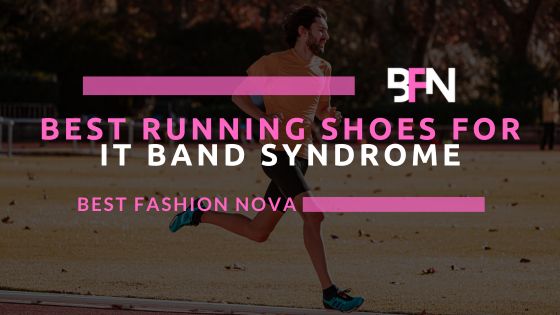
If you’re a runner who experiences IT band syndrome, you know how frustrating it can be to have to cut your runs short or take time off due to pain.
IT band syndrome is a common overuse injury that affects the iliotibial band, a thick band of tissue that runs from the hip down to the knee. This injury can cause pain on the lateral side of the knee, which can be aggravated by running or other high-impact activities.
One way to help manage IT band syndrome is by wearing the right running shoes. The right shoes can help provide the support and cushioning you need to reduce the stress on your IT band and alleviate pain.
However, with so many options available, it can be overwhelming to choose the best running shoes for IT band syndrome.
In this article, we’ll take a closer look at some of the top options on the market and provide you with the information you need to make an informed decision.
Related Post: Best Running Shoes for Older Runners
List of Best Running Shoes for IT Band Syndrome
If you suffer from IT Band Syndrome, finding the right running shoes can be a game-changer. Here are 10 of the best running shoes for IT Band Syndrome to reduce discomfort.
Note
Our team has conducted extensive research to curate this list of running shoes. We have collected data from a diverse group of testers, reviewers, and buyers from various sources, including blogs, YouTube videos, Reddit posts, and e-commerce platforms, to ensure that our recommendations are based on a wide range of experiences.
We believe that the data collected from hundreds of real-life customers who have used these products in various conditions is more reliable and unbiased than the reviews from just a few hired testers.
You can also watch our video, if you don’t have time to read!
10 Best Running Shoes for IT Band Pain
1) Brooks Ghost 15 [Most Recommended Running Shoe for IT Band]:
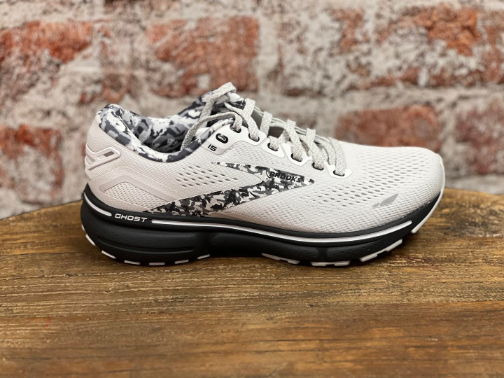
| Heel Drop | 12mm |
| Stack Height | Forefoot: 23mm | Heel: 35mm |
| Weight | Men: 286g | Women: 258g |
| Color Options | 32 Colors |
| Best For | Daily Training, Jogging, Walking, Treadmill |
| Arch Support | Neutral |
| Terrain | Road |
The Brooks Ghost 15 is a neutral daily running shoe that offers a medium-soft ride. It has a combination of BioMoGo and DNA LOFT v2 midsole that adapts to your foot shape and provides excellent shock absorption.
The shoe also has a Segmented Crash Pad that smoothens your transitions and reduces the impact on your knees.
The upper is made of breathable engineered mesh that keeps your feet cool and dry.
The shoe is durable, flexible, responsive, and have a heel drop of 12 mm, making it ideal for various runs, daily training, workouts and walking.
The Brooks Ghost 15 is designed to help you run without pain and enjoy the experience. It is a trusted choice for many runners who have IT band syndrome as well as Achilles or calf troubles.
Pros:
- 80% of 9700+ reviews analyzed were overall positive.
- Excellent slip-resistance in wet conditions.
- Works great for daily training, walking, and running.
- Wider toe-box.
- Best for heel strikers due to optimized and durable outsole with extra-cushioning.
- Extremely comfortable, durable, and amazingly priced.
- Available in various sizes and colors along with 4 different widths.
- It is better in breathability than Brooks Ghost 14.
- A good choice for heavy runners.
- Recommended for slow to moderate-paced running.
Cons:
- Not optimized for forefoot strikers.
- Slightly heavier than Brooks Ghost 14.
- It is not as breathable as other quality running shoes like the Saucony Triumph 20.
- Little arch support compared to the Ghost 14 (According to a couple of buyers).
- Not suitable for high-speed runs.
- Less reflective elements.
Helpful Customer Review:
“This is my third pair of Brooks and second pair of Ghost 15. I like the weight, feel, and stability of the ghost shoe. I have knee and hip pain and to me these shoes seem to minimize the soreness. With that said my first pair of Brooks ripped out alongside the big toe on one shoe and wore out faster then expected. My first pair of Ghosts 15 which I might add feel great enough to buy a second pair also wore out faster than any of my ASICS, Nikes, and Reeboks tennis shoes I have ever owned in the past.”
Review By T. Meguiar
Check Price on Amazon
2) Brooks Adrenaline GTS 23 [Best Everyday Running Shoes for IT Band Pain]:
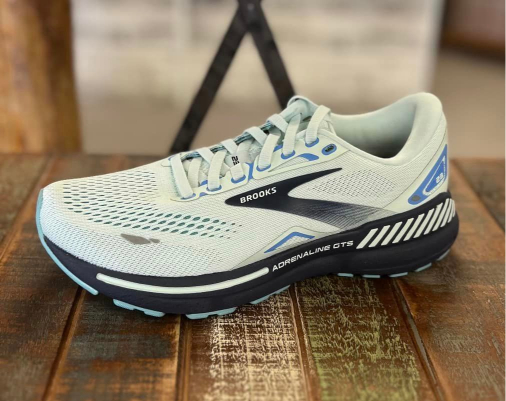
| Heel Drop | 12mm |
| Stack Height | Forefoot: 24mm | Heel: 36mm |
| Weight | Men: 286g | Women: 258g |
| Color Options | Men: 14 | Women: 16 |
| Best For | Daily Training, Aerobic Running, Jogging, Treadmill |
| Arch Support | Stability |
| Terrain | Road |
The Brooks Adrenaline GTS 23 is another great choice for runners who have IT band syndrome.
This shoe has a soft and light midsole made of DNA LOFT v2, which is a mix of foam, rubber, and air. This gives the shoe a comfortable and responsive feel.
The shoe has a heel height of 36 mm and a front height of 24 mm, which means it has a 12 mm heel-to-toe drop. This is good for runners who land on their heels, as it reduces the pressure on the IT band.
The shoe also has a feature called GuideRails, which is a support system that helps you keep your natural stride. The GuideRails prevent your IT band from rubbing against your bones, which can cause more pain and damage.
The shoe has a mesh upper that allows air to flow and keep your feet cool. The upper also has a 3D Fit Print that adds strength and stability to the shoe.
The shoe has a rubber outsole that gives you good grip and traction on different surfaces.
The Brooks Adrenaline GTS 23 is a reliable and versatile shoe that can help you run with ease and comfort. It is made for runners who need support and cushioning, especially those with IT band syndrome.
Pros:
- 75% of the reviews from 1500+ reviewers we have analyzed were in favor of this product. Reviewers appreciated the comfort, appearance, quality, breathability and performance of the shoes.
- Budget-friendly price.
- Optimized for heel-strickers.
- Offers excellent stability for mid-foot overpronators.
- Works great for easy miles and tempo pace.
- Available in narrow and wide width along with wide range of sizes and colors.
Cons:
- A few loyal Brooks Adrenaline customers were disappointed with Adrenaline 23’s redesign, which made the shoe NOT true-to-size and width. A couple of reviewers also reported discomfort and blisters.
- A few testers reported that its engineered mesh isn’t as durable as it should be.
- May not be good for forefoot strikers due to high heel-drop and lack of forefoot cushioning.
- Not recommended for high speed running.
Helpful Customer Review:
“These are great running shoes! I go on daily runs and these shoes are very comfortable and provide great support for my feet and ankles. I sometimes get knee pain from running but I haven’t experienced any pain since I started wearing these shoes. They are extremely lightweight so I feel like I am flying when I run in these. They are also great for walks and I’ve worn them to run errands as well. These shoes have a good amount of cushioning so I am able to wear them all day long without my feet hurting. I like the design as well and how the shoes look sleek and not bulky. I’m really impressed with the comfort and quality of these sneakers!“
Review By cf630
Check Price on Amazon
3) ASICS Gel-Kayano 30 [Best Stability Running Shoes for IT Band]:
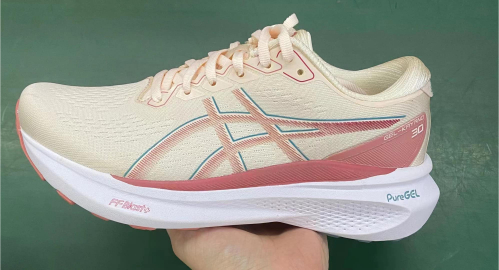
| Heel Drop | 10mm |
| Stack Height | Forefoot: 30mm | Heel: 40mm |
| Weight | Men: 303g | Women: 263g |
| Color Options | Men: 11 | Women: 11 |
| Best For | High-mileage Running, Daily Training, Walking, Treadmill, Jogging |
| Arch Support | Stability |
| Terrain | Road |
The Gel-Kayano 30 features a new Four-dimensional Guidance System that adapts to your foot movement and provides support where you need it most.
The FF BLAST PLUS ECO in the midsole along with PureGEL technology in the heel area, combines to offers softer cushioning and better shock absorption, reducing the friction and inflammation that cause IT band syndrome.
The shoe also has a higher stack height (39.7 mm in heel and 27.7 mm in forefoot) and a larger midsole platform, giving you more surface area and foam for a smoother ride.
The Gel-Kayano 30 is designed for runners who overpronate, meaning their feet roll inward too much when they run. This can cause the IT band to tighten and rub against the knee or hip bones. The Gel-Kayano 30 helps to correct this by aligning your foot and leg in a more natural position.
The shoe also has a 10mm HTT drop, 303g weight (for Men), breathable mesh upper, a durable rubber outsole, and a variety of colors and widths to choose from.
Don’t let IT band syndrome stop you from enjoying your runs. Try the Gel-Kayano 30 today and experience the difference.
Pros:
- 75% of 180+ reviewers were overall satisfied with the shoe’s quality and performance.
- Offers exceptional Build quality, and amazing cushioning.
- Impressively lightweight with excellent traction.
- Equipped with highly impressive 4D Guidance System for stability.
- Well-balanced, sleek, maximalist design with amazing breathability, durability and comfort.
- Recommended for high-mileage running, and daily training.
Cons:
- Takes time to break-in especially in midfoot area.
- Not recommended for high-speed running, race and workout.
- Not too responsive.
Helpful Customer Review:
“I have been running on Asics Kayano shoes for years and last pair was 2-3 years old. I have been running for many years and cushioning is my first priority to preserve my knees and hips. These are noticeably better than any prior version. Still have the firm heel to prevent lateral movement and wide boxy toe area. As far as size, I have always used 12.5 and although some comments were to size up, this fit me perfectly well.”
Review By RAF
Check Price on Amazon
4) New Balance Fresh Foam X 1080 v13 [Best Running Shoes for Long-Distance Running]:

| Heel Drop | 6mm |
| Stack Height | Forefoot: 32mm | Heel: 38mm |
| Weight | Men: 262g | Women: 206g |
| Color Options | Men: 6 | Women: 6 |
| Best For | Walking, All-day Wear, Jogging, Treadmill |
| Arch Support | Neutral |
| Terrain | Road |
If you are looking for a daily training shoes, with 6mm heel drop, that can reduce this friction and provide you with a smooth and comfortable ride, you should consider the New Balance 1080 v13.
This premium neutral trainer offers versatility and protection for your long runs. It features a Fresh Foam X midsole that is soft and responsive, absorbing the impact of each step and propelling you forward.
The midsole also has a rocker shape that helps you transition smoothly from heel to toe, minimizing the stress on your IT band.
The upper is made of a breathable and supportive mesh that hugs your foot and keeps it in place. The outsole is durable and grippy, giving you traction and stability on various surfaces.
The New Balance 1080 v13 is a shoe that can help you run longer and faster without aggravating your ITBS. It is designed to provide you with a plush and efficient running experience, whether you are training for a race or just enjoying a casual jog.
Pros:
- 78% of 137 respondents recommended this product.
- More cushioned than a regular daily trainer.
- Best running shoes for long-distance running.
- Entirely new design compared to the previous version.
- Incredibly plush and rocker geometry.
- High stack height but with low heel drop of 6mm.
- Bouncier and softer with slightly bigger toe-box than NB 1080 v12.
Cons:
- This shoe may run small to fit.
- Runners who have upgraded from previous versions of NB 1080, found the v13 less breathable and tighter in the toe box and across the forefoot.
Helpful Customer Review:
“I’m a 32 year old with knees and ankles of a 63 year old. I’ve played sports my whole life and my legs have felt the brunt of it. I’ve been needing a good pair of running shoes to cushion my walks and runs whether at the gym or on the sidewalk. These shoes have been great! The cushion is bar none and they look great on the feet as well! The fit is nice and there is zero heel slip. I like the lockdown and the pacing system has been great and comfortable!“
Review By Awesomeseanster
Check Price on Amazon
5) HOKA Arahi 6 [Lightweight Stability Running Shoes for IT Band]:
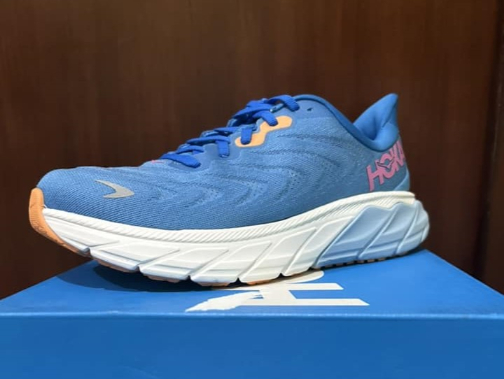
| Heel Drop | 5mm |
| Stack Height | Forefoot: 24mm | Heel: 36mm |
| Weight | Men: 286g | Women: 258g |
| Color Options | Men: 18 | Women: 16 |
| Best For | Daily Running, Recovery Running, Jogging, All-day Wear, Walking, Treadmill |
| Arch Support | Stability |
| Terrain | Road |
The HOKA Arahi 6 is another considerable addition for overpronating-runners who suffers from iliotibial band syndrome. It features a breathable mesh upper with zones of ventilation, a plush tongue, and a pull tab for easy on and off.
The shoe also has a J-Frame technology that wraps around the heel and midfoot to prevent excessive inward rolling of the foot, which can aggravate the IT band. The J-Frame™ is made of firmer foam than the rest of the midsole, which offers a balanced cushioning and responsiveness.
The shoe has a 5 mm heel-to-toe drop, which promotes a natural running posture and reduces stress on the IT band. The outsole has zonal rubber for durability and traction.
The Hoka Arahi 6 is a lightweight, stable, and comfortable stability shoe that can help you run longer and faster without compromising your IT band health.
It is available in a variety of colors and widths, and it is suitable for everyday running, recovery running, walking, and treadmill.
Pros:
- 80% of 4200+ reviews analyzed were positive.
- Amazing comfortable, well-balanced cushion and stable platform.
- Lightweight rocker design, true-to-size, and reliable lacing system.
- Snug-fit and well lockdown throughout the shoe.
- Recommended for long, slow runs, as well as jogging, all-day wearing and walking.
Cons:
- A few customers reported unreliable grip and durability issues.
- Not suitable for racing, half or full marathon.
- They are less responsive, and bouncy.
Helpful Customer Review:
“I made a full brand switch when I bought these shoes. I run about 20-30 miles a week, and with the previous support shoes I was wearing, I was starting to get knee and IT-band issues due to a lack of support for my overpronation. I’ve put ten miles into these so far and am absolutely in love. I won’t be going back to my previous brand (sorry not sorry ASICS).“
Review By kw
Check Price on Amazon
6) New Balance 860v13 [Best Running Shoes for Flat Feet and Overpronation]:
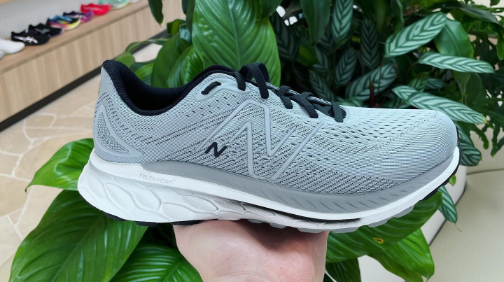
| Heel Drop | 10mm |
| Stack Height | Forefoot: 17mm | Heel: 27mm |
| Weight | Men: 309g | Women: 243g |
| Color Options | Men: 3 | Women: 3 |
| Best For | Daily running, Recovery running, Slow-paced training, Jogging |
| Arch Support | Stability |
| Terrain | Road |
You can also consider the New Balance 860 v13, if you are a overpronator or have a flat feet, and need a shoe that can provide you with stability, cushioning, and comfort to keep your IT band from getting irritated and inflamed.
The 860 v13 are a moderate stability shoe that features a new Fresh Foam X midsole. The Fresh Foam X is a softer and more responsive version of the original Fresh Foam, which offers balanced cushioning from heel to toe.
The NB 860 v13 also has a supportive medial post that prevents excessive inward rolling of your foot, which can cause IT band friction. The 860 v13 is designed to give you a smooth and reliable ride over any distance, with a durable rubber outsole and a breathable mesh upper.
Whether you are training for a marathon or just running for fun, the 860 v13 can help you prevent IT band syndrome and enjoy your runs.
When compared to New Balance 1080 v13 mentioned earlier, the 860 v13 has more stability, slightly less cushioning, higher weight (243g for Women Version) and higher heel drop (10mm).
Pros:
- 75% of 700+ reviews we analyzed were positive with this product.
- Offers more stability than 1080v13.
- Rocker-shaped outsole with amazing durability.
- Available in various width options. Best for runners with wide feet.
- Well-supported and stable arch area.
- Sleek appearance with breathable and supportive upper.
Cons:
- Less color options.
- Offers less cushioning than NB 1080v13.
- Heavier than NB 1080v13.
- A few buyers reported that these shoes may run small.
Helpful Customer Review:
“I work 10 hours a day standing and walking on concrete floors, these 860’s give me support for my knees and feet. Very much worth the price for comfort.“
Review By Andyhartmann
Check Price on Amazon
7) Saucony Guide 16 [Best Running Shoes for Overpronators]:

| Heel Drop | 8mm |
| Stack Height | Forefoot: 27mm | Heel: 35mm |
| Weight | Men: 249g | Women: 221g |
| Color Options | Men: 13 | Women: 14 |
| Best For | Daily Training, All-day Wear, Walking, Jogging, Treadmill |
| Arch Support | Stability |
| Terrain | Road |
The Guide 16 by Saucony is another daily stability shoe that designed to help you run better and longer with IT Band Syndrome, knee pain, Plantar fasciitis, or flat feet and overpronation.
The Saucony Guide 16 features a Hollow Tech support frame that prevents excessive inward rolling of your feet, which can cause IT band irritation. The support frame is lighter and less intrusive than a medial post, so you can enjoy a smooth and natural ride.
The shoe also has a stiff and sturdy heel counter that keeps your achilles supported and aligned, reducing the risk of injury.
The Guide 16 is powered by PWRRUN foam, a thick and durable cushioning that absorbs shock and protects your joints. The foam is firm enough to provide responsiveness, but not too hard that it feels unforgiving.
This Saucony shoe also has a breathable and flexible mesh upper that adapts to your foot shape and movement, ensuring a snug and comfortable fit.
The Saucony Guide 16 is a light and versatile shoe that can handle any distance and pace. It weighs only 221g for women and 249g for men, making it one of the lightest stability shoes on the market.
It has a 8mm heel-toe drop, which promotes a balanced and efficient stride. It also has a durable and grippy rubber outsole that can tackle treadmill, running, walking and jogging in any terrain and weather condition.
The Saucony Guide 16 is the perfect shoe for runners with IT band syndrome or knee pain, who want to enjoy their runs without pain or discomfort.
Pros:
- 82% of 400+ reviews analyzed were positive.
- The shoe is lightweight and comfortable to wear.
- Soft, tough, breathable upper that keeps your feet cool and dry.
- Generous and well-balanced cushioning with excellent stability and pronation control.
- Works great for long-distance, easy runs, recovery runs and walking.
- Offers a a durable outsole that provides good traction on different surfaces.
Cons:
- Not enough responsive for fast-paced running.
- The shoe may not be suitable for people who prefer a minimalist design.
- It feel a bit stiff initially and may require some time to break in.
- Uncomfortable to wear without socks.
- May run narrow for wide feet.
Helpful Customer Review:
“I am restocking my running shoes and this was 1 of 3 (different brands/styles) recommended [by my Podiatrist, fellow fitness professionals & avid power walkers] for my particular needs. On the second day these puppies were amazing in everyway. Stability, no shin/knee pain, no pain the next day and simply comfortable from toe box to heel. I cannot feel the impact of making contact with varied surfaces (this is important to me).
Review By Sassy
I will not make the same mistake of the past by wishing I’d purchased a second pair. Definitely getting a second pair to add to my rotation.”
Check Price on Amazon
8) Brooks Launch GTS 10 [Best Daily Stability Trainer for IT Band]:
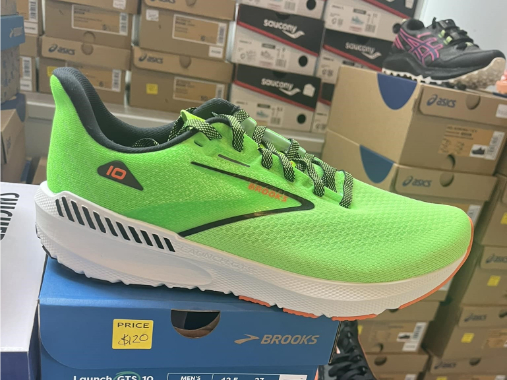
| Heel Drop | 10mm |
| Stack Height | Forefoot: 24mm | Heel: 34mm |
| Weight | Men: 243.8g | Women: 221.1g |
| Color Options | Men: 2 | Women: 3 |
| Best For | Daily Training, All-day Wear, Walking, Jogging, Treadmill |
| Arch Support | Stability |
| Terrain | Road |
To keep your IT band happy and healthy, you can also try the Brooks Launch GTS 10, the latest version of the popular lightweight trainer that offers you a fast and fun ride with a touch of stability.
The Brooks Launch GTS 10 features a breathable and snug-fitting upper, crafted from engineered wrap knit fabric, that keeps your foot secure and comfortable.
The midsole is made of BioMoGo DNA, a responsive and adaptive material that gives you a quick, smooth and energetic transition from heel to toe.
The outsole has a unique pattern that promotes a quick and efficient toe-off and helps you go faster.
But what makes the Brooks Launch GTS 10 stand out from other shoes is the GuideRails technology, which acts as a sidewall, and a gentle guide to keep your foot and knee in alignment and prevent excess movement that can irritate your IT band.
The GuideRails are not intrusive or rigid, but rather adapt to your natural stride and provide support only when you need it.
The Brooks Launch GTS 10 is a versatile shoe that can handle any distance and pace, from short sprints to long runs and jogging.
It is also reasonably priced, making it a great value for a high-quality shoe. If you want to run faster and pain-free, you should give the Brooks Launch GTS 10 a try.
Pros:
- From 140+ reviews we have analyzed 84% were positive
- Adequately responsive and optimized for all-paced running.
- Amazingly lightweight.
- Affordable price.
- Offers impressive stability and smooth ride.
- Boast a durable outsole with excellent grip, and comfortable upper.
Cons:
- Not optimized for extreme overpronators.
- Not designed for extreme climates as it offers low breathability in summers, and become stiff in winters.
- Lack of color options.
- Not recommended for neutral runners.
Helpful Customer Review:
I’ve been using these shoes for the last month, mainly for pavement running now that the weather is starting to head up. I’ve also been wearing them on the weekends, taking the kids to theme parks and the zoo, places where we have annual memberships.
Overall I am very happy with these shoes. They fit true to size. The width is also great, especially for someone like me with slightly wider feet. In terms of style, I like the black/white/grey color combination that I have. A lot of my running attire is minimalist and monochrome, so these totally fit in with the theme I got going on.
These shoes are very supportive. I initially didn’t like that because I was used to running shoes with minimal support. But now that I’ve had a chance to get acclimated, I am loving the support. My knees are thanking me after every run. And wow these shoes are very light.
My one criticism of this shoe is that the tongue is way too thin. The shoes are still comfortable, I just wish the tongue was a little bit more padded than it currently is.
I’ve also been wearing these shoes for weekend all-day outings with the kids and they’re just as great in these situations as well.
So, in conclusion, I think these are a great supportive and lightweight pair of running shoes that can handle whatever you throw at it. If you’re the type of runner who prefers additional support, you will like these shoes.”
Review By SoCal Dad/Runner
Check Price on Amazon
9) HOKA Bondi 8 [Best Running Shoes for Heavy Runners]:
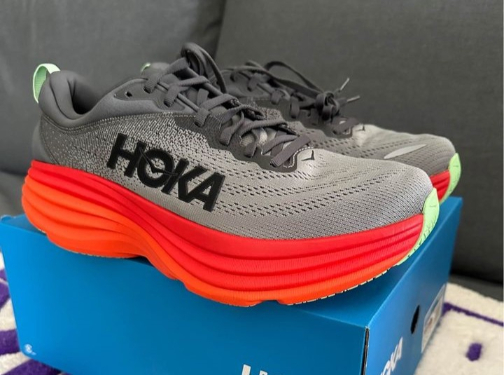
| Heel Drop | 4mm |
| Stack Height | Forefoot: 35mm | Heel: 39mm |
| Weight | Men: 311g | Women: 252g |
| Color Options | Men: 25 | Women: 19 |
| Best For | Recovery Running, Daily Running, All-day Wear, Walking, Jogging, Treadmill |
| Arch Support | Neutral |
| Terrain | Road |
The HOKA Bondi 8 is among the most cushioned shoe in the HOKA lineup, that can provide you with maximum cushioning, stability, and comfort for your everyday running, including recovery runs, as well as walking, jogging, treadmill and all-day wearing.
This shoe features a new, lightweight, and softer foam midsole that absorbs the impact of each step and reduces the friction on your IT band.
The extended heel geometry and the rear crash pad offer a smooth and balanced ride from heel strike to forefoot transition.
The engineered mesh upper and the memory foam collar deliver breathable and snug fit.
The zonal rubber outsole ensures durability and traction.
The HOKA Bondi 8 is the ultimate choice for big guys and heavy runners with IT band syndrome who want to enjoy their runs without pain.
Don’t let your IT band stop you from reaching your goals. Order your pair of HOKA Bondi 8 today and experience the difference.
Pros:
- 84% reviewers of 10,000+ reviewers recommended to buy these shoes.
- Too many color options for both men and women.
- Comes with lower heel drop than most running shoes.
- Offers lighter and firmer midsole, and extended heel and wider base for smooth running with precision and stability.
- Breathable upper with sung fit.
- One of the most cushioned and comfy daily trainer for easy and recovery runs.
Cons:
- Not recommended for runners with wide feet due to less-spacious toe-box and tight midfoot.
- Heavier than many running shoes.
- Not optimized for high-speed running.
- According to RunRepeat, its actual heel drop is 6.2mm, taller than manufacturer-stated 4mm.
Helpful Customer Review:
“I have ran in all brand shoes and I have had many versions of Bondis. These are the best yet. I like these better than the Bondi X. I had been running in a minimal shoe , however, I have been having some knee pain recently. Since changing to these I have had no knee pain. Thanks Hoka!!!“
Review By Mississippi R
Check Price on Amazon
10) Saucony Cohesion 15 [Affordable Running Shoes for IT Band]:
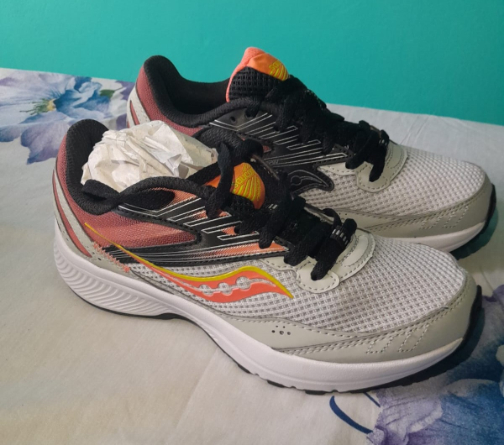
| Heel Drop | 12mm |
| Stack Height | Forefoot: 16.5mm | Heel: 28.5mm |
| Weight | Men: 258g | Women: 215g |
| Color Options | Men: 8 | Women: 10 |
| Best For | Daily Training, Walking, Jogging |
| Arch Support | Neutral |
| Terrain | Road |
The Saucony Cohesion 15 is among the budget-friendly and durable pair of running shoes that can support your feet and reduce the friction and inflammation of your IT band.
The Saucony Cohesion 15 features a VERSARUN foam midsole that provides cushioning and shock absorption for your knees and hips.
The rubber outsole, referred as XT-600 outsole, is designed to last for hundreds of miles and provide traction on various surfaces.
It has a heel drop of 12mm which can reduce the stress on the calf and Achilles, the moderate stack height (28.5mm heel/16.5mm forefoot) can provide some protection and responsiveness.
The mesh and textile upper is made with recycled materials and has a breathable and secure fit. The shoe also has a padded tongue and heel collar for extra comfort and protection.
The Saucony Cohesion 15 is 9.1 oz. (258g) in weight, making it a great choice for runners who want a lightweight, simple and reliable shoe that can help them cope with IT band syndrome.
Pros:
- 65% of 1900+ reviews we have analyzed appreciated the fit, versatility, appearance, weight and value of the shoe.
- Amazingly lower price with good quality and long-lasting comfort and usage.
- Equally good for daily running, jogging, walking and casual wear.
- 60% of the buyers find these shoes true-to-size and width.
- Durable outsole, secure upper, long laces, and padded tongue and Achilles flair.
Cons:
- More of a dad shoe in appearance.
- Limited uses for serious runners.
- Uneven padding on heel and ankle area.
- According to a couple of testers, the shoes tend to be more snug than they should be.
Helpful Customer Review:
“Have wore Cohesions for a couple years and love them. No pain, no injuries, no cramps, no feeling of feet going to sleep during marathons. Excellent wear-ability too – can easily get 6-8 months of 20-25 mile per week runs without the sole wearing out (like other brands with super soft rubber soles).”
Review By Tx Reader
Check Price on Amazon
Understanding IT Band Syndrome
IT band syndrome is a condition that causes pain and inflammation on the outside of the knee or hip. It occurs when a thick band of tissue called the iliotibial band (IT band) rubs against the bones of the knee or hip joint.
The IT band is a tendon that connects the muscles of the hip and thigh to the knee. It helps stabilize the knee and hip during movement.
IT band syndrome is usually caused by overuse or repetitive activities that involve the knee or hip, such as running, cycling, hiking, or skiing.
It can also be triggered by factors that affect the alignment or biomechanics of the leg, such as:
- Having one leg longer than the other.
- Having bowed legs or flat feet.
- Wearing worn-out or improper shoes.
- Running on uneven or sloped surfaces.
- Increasing the intensity or duration of exercise too quickly.
Some of the symptoms of IT band syndrome include:
- Pain or tenderness on the outside of the knee or hip, especially when bending or straightening the leg.
- Swelling or inflammation on the affected area.
- Snapping or clicking sensation when moving the knee or hip.
- Reduced range of motion or stiffness in the knee or hip.
When looking for running shoes for IT band syndrome, it’s important to consider your foot type, gait, and running style. It’s also important to choose shoes that fit properly and provide the necessary support and cushioning.
Investing in a good pair of running shoes may seem like a small thing, but it can make a big difference in your running performance and overall health. So, make sure to choose your running shoes wisely and take care of your IT band.
Importance of Choosing the Right Running Shoes for IT Band Syndrome
When it comes to running with IT Band Syndrome, choosing the right pair of running shoes is crucial. Your shoes can either help alleviate or worsen the symptoms of IT Band Syndrome.
“Don’t ignore the importance of good [gear and] materials for your run. Your feet and knees will thank you immensely for the investment made in shoes specific to the running you practice”
Priscila Gonçalves , an ASICS FrontRunner member.
Here are some reasons why choosing the right running shoes is important for IT Band Syndrome:
Proper Support
Running shoes that provide proper support can help prevent IT Band Syndrome by reducing the amount of stress placed on the iliotibial band.
Shoes with adequate arch support, heel cushioning, and stability features can help distribute the impact of each stride more evenly across your foot and leg, reducing the impact on your IT band.
Correct Fit
Wearing running shoes that fit well is also important in preventing IT Band Syndrome.
Shoes that are too tight or too loose can cause your foot to slide around inside the shoe, leading to increased stress on the IT band.
Make sure to measure your feet properly and try on several different pairs of shoes to find the best fit for you.
Proper Pronation Control
Overpronation, or Supination can lead to IT Band Syndrome. Running shoes with proper pronation control can help prevent this issue.
- Supination is when your foot rolls outward as you land on it. This can cause more shock to your knees, so you need shoes with enough cushioning to absorb it. But don’t go overboard with cushioning, as it can also make your knees hurt more. You have to experiment with different levels of cushioning to find the best one for you.
- Overpronation is when your foot rolls inward as you land on it. This can put more stress on your knees, so you need shoes with stability and support features like medial posts. These shoes can also have a wider base and shock-absorbing design to reduce the pressure on your knees.
Look for shoes with a sturdy, supportive sole and a firm heel counter to help keep your foot in a neutral position while you run.
Flexibility
While support is important, your running shoes also need to be flexible enough to allow your foot to move naturally. Shoes that are too stiff can cause your foot to work harder, leading to increased stress on your IT band.
Look for shoes that are flexible in the forefoot and allow your foot to move naturally as you run.
Choosing the right running shoes can make all the difference when it comes to managing IT Band Syndrome. Make sure to take the time to find the best shoes for your needs, and don’t be afraid to seek advice from a professional if you’re unsure.
How to Choose the Best Running Shoes for IT Band Syndrome
If you’re suffering from IT band syndrome, finding the right pair of running shoes can make all the difference in your recovery. Here are some key factors to consider when choosing the best shoes for you.
Consider Your Running Style
Your running style can have a big impact on the type of shoes you need. For example, if you’re a heel striker, you’ll want shoes with extra cushioning in the heel to absorb shock. If you’re a forefoot striker, you’ll want shoes with more cushioning in the front of the foot.
Understand Your Foot Type
Knowing your foot type can also help you choose the right shoes. There are three main types of feet: flat, neutral, and high arches. If you have flat feet, you’ll want shoes with more support and stability. If you have high arches, you’ll want shoes with more cushioning and flexibility.
Look for the Cushioning
It is usually assumed that runners with IT band syndrome or knee pain need more cushion in their shoes, as running puts a lot of stress on the knees, feet, and other joints. This is why there are many shoes with extra cushioning available!
However, a 2018 study discovered that highly-cushioned shoes (maximalist shoes) can “change the spring-like nature of running and increase rather than decrease impact loading.”
So, too much cushion is not always good. Yet, it does not imply that more cushion is bad for everyone. We are all different so you have to test multiple shoes with different cushioning and choose the right one for yourself!
Test for Heel Drop
To prevent or reduce IT band syndrome, some runners may benefit from wearing shoes that have a moderate to high heel drop, such as 8 to 12 mm. This can help reduce the load on the foot and lower leg muscles and transfer it to the knees.
However, according to Nike, “Moderate to high heel drop may not be suitable for everyone, as some runners may prefer a lower heel drop or a more natural running style. Most knee pain needs lower heel drop, like IT band syndrome and runner’s knee. But if plantar fasciitis makes you change your stride and hurt your knees, higher heel drop can help.”
The best way to find the right heel drop for you is to try different shoes and see how they feel.
Test for Comfort and Fit
Finally, it’s important to test for comfort and fit. Make sure the shoes feel comfortable and snug.
You should look for the one that fit your feet well and don’t squeeze them too much. Some shoes only have one width option, but others have more choices like narrow or wide.
You should check the size charts for each brand before you decide which shoes are best for you.
Moreover, walk around in them and test them on different surfaces to make sure they feel right for you.
By considering your running style, foot type, and testing for comfort and fit, you can find the best running shoes for IT band syndrome and get back on track to pain-free running.
Conclusion
When it comes to finding the best running shoes for IT band syndrome, there are a few key factors to consider. Proper cushioning, support, and stability are all important features to look for in a shoe.
It’s also important to consider the shape of your foot and any specific biomechanical issues you may have.
After researching reviews from various reliable testers, reviewers and buyers, we’ve compiled a list of some of the top options for runners with IT band syndrome.
The Brooks Ghost 15 and Brook Adrenaline GTS 23 are both the best overall for IT band syndrome and knee pain, while the Hoka One One Bondi 8 is an excellent choice for those looking for a shoe with ample cushioning and support.
The ASICS Gel-Kayano 30 is a great option for runners in need of extra stability, while the Saucony Guide 16 offers a comfortable, responsive ride.
Ultimately, the best running shoe for IT band syndrome will vary depending on your individual needs and preferences.
We recommend trying on a few different options and taking them for a test run to see which shoe feels the most comfortable and supportive for you.
With the right shoe, you can help alleviate pain and discomfort associated with IT band syndrome and continue to enjoy running for years to come.











![Altra Heel To Toe Drop Chart [2024 Updated]](https://bestfashionnova.com/wp-content/uploads/2023/10/Altra-Heel-Drop-Chart.jpg)
![Under Armour Heel Drop Chart [2024 Updated]](https://bestfashionnova.com/wp-content/uploads/2023/10/Under-Armour-Heel-Drop-Chart.jpg)
![Brooks Heel Drop Chart [2024 Updated]](https://bestfashionnova.com/wp-content/uploads/2023/08/Brooks-Heel-Drop-Chart.png)

![Hoka Heel Drop Chart [2024 Updated]](https://bestfashionnova.com/wp-content/uploads/2023/10/Hoka-Heel-Drop-Chart.jpg)
![Saucony Heel Drop Chart [2024 Updated]](https://bestfashionnova.com/wp-content/uploads/2023/10/Saucony-Heel-Drop-Chart.jpg)